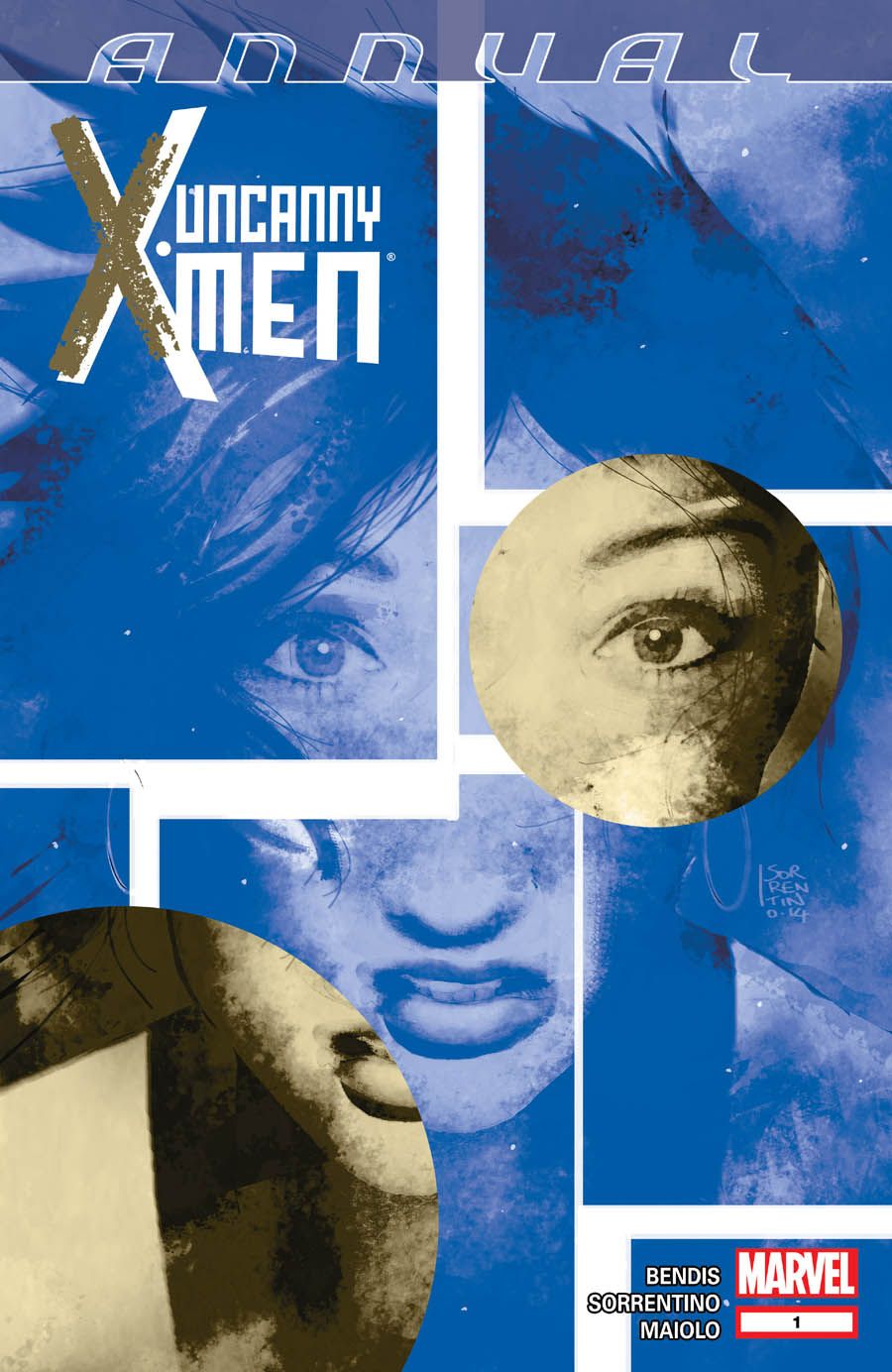The idea behind "Uncanny X-Men Annual" #1 -- finally showing us what happened to Eva Bell when she accidentally launched herself through time and came reappeared seconds later having aged several years -- is an interesting one. But Brian Michael Bendis and Andrea Sorrentino's issue is only half of a story, and judged solely on its own, the pacing is all over the place.
The big problem behind the pacing of "Uncanny X-Men Annual" #1 is that we've already seen this story's endpoint: an older Eva returns to the present day, right after she vanished. We know that she appeared alone, and that she won't talk about what happened. The problem is, Bendis' script acts like we don't already know how this eventually wraps up. So while the first two time hops -- into the future where Killraven's Martian invaders are ravaging the planet, and then into the past where she meets the Rawhide Kid -- work at just the right amount of time and achieve their functions, the third one is where it all grinds to a halt.
That's a real pity, because it theoretically could have been the real emotional core of the story. Eva working with Illyana Rasputin in the future and having created a family of her own is a great idea. Even knowing the endpoint of this story, hovering overhead, isn't initially a detriment. But with the book jumping over the actual formation of the family, something that an annual theoretically could have given the space to dwell on, it all falls apart. Eva's family is little more than a pair of background faces who briefly appear; there's no emotional attachment to them. And when Eva is forced to abandon them, it's in such a dispassionate manner in the storytelling that it's also hard to entirely care.
Sorrentino's art for the first half of "Uncanny X-Men Annual" #1 works fairly well. The hellish future of the Martian invasion looks suitably apocalyptic, with the destruction of entire cities getting depicted in a manner that comes across dangerous. Sorrentino and colorist Marcelo Maiolo go all out here; the burning red sky, the white-hot blasts from the sky, the serpentine metal tentacles that come down from the Martian ships. Sorrentino's normal visual tricks are on display here too; the inset panels within a larger image to draw attention to that moment, for example, which also gives a sense of movement where there is none. Likewise, the sepia-toned wild west looks great, with a faded and washed out look to match Eva's perception of that era. I love how Sorrentino draws the Rawhide Kid here, too; he's expressive and helpful bundled up into one, and the look on his face after Eva leaves is pretty-near perfect.
The second half of the issue doesn't quite hold up on a visual level, though. The first half feels like it's eschewing Sorrentino and Maiolo's normal style, going for an early-'90s Image Comics look and feel with overly rendered colors and a lot of random face paint. And when disaster strikes in the future, it's actually a little hard to tell entirely what's going on; the backgrounds drop out almost entirely, and the colors are so garish that they obscure the actual sequence of events. It's a real letdown.
The idea behind "Uncanny X-Men Annual" #1 is interesting, and at first the issue looks like it's off to a good start. But what could have been an emotional and touching moment is instead bland and by the numbers. It's a real shame, because there was almost certainly a way to make all of this work. But for now, it just doesn't come together.

